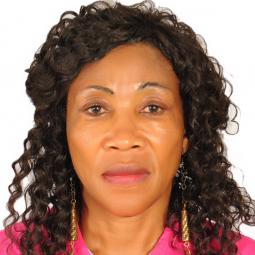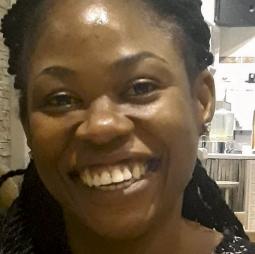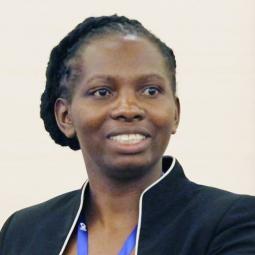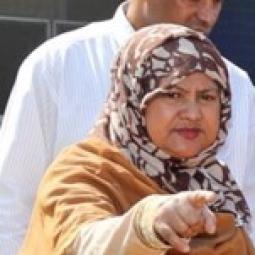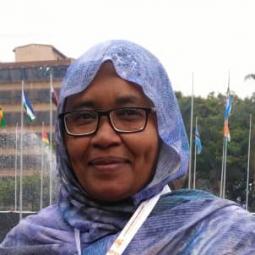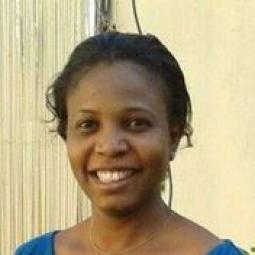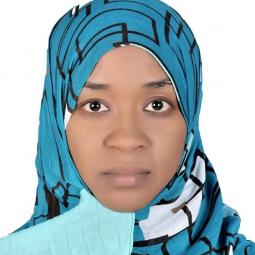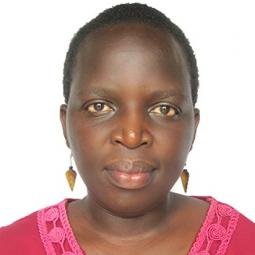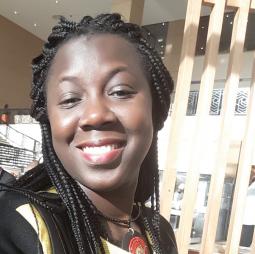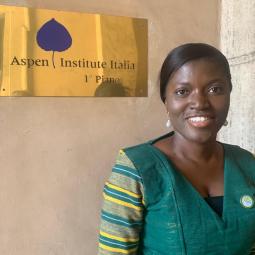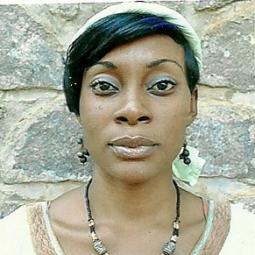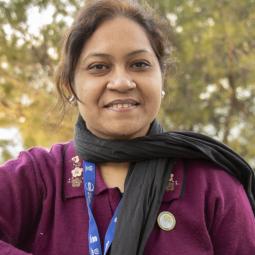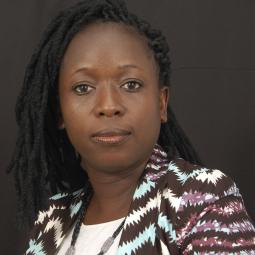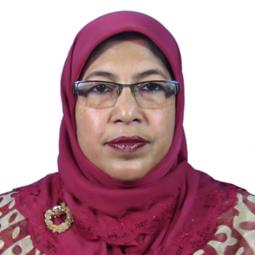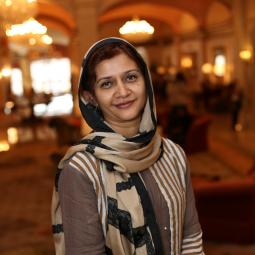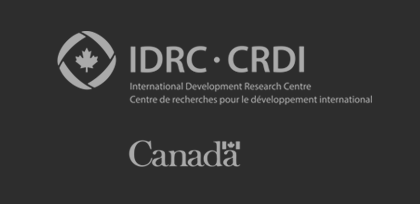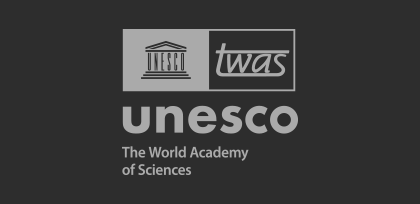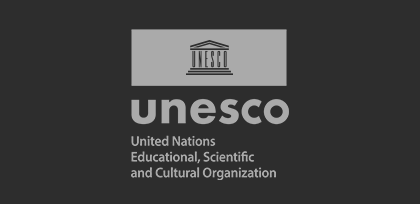OWSD Nigeria National Chapter Presents 'NATIVE – DIGITAL IMMIGRANT CONTINUUM: THE PLACE OF WOMEN IN STEMM'
May 27, 2021
OWSD Nigeria National Chapter University of Port Harcourt Branch series of scientific communications: Esther Fomzi on DIGITAL NATIVE – DIGITAL IMMIGRANT CONTINUUM: THE PLACE OF WOMEN IN STEM
DIGITAL NATIVE – DIGITAL IMMIGRANT CONTINUUM: THE PLACE OF WOMEN IN STEMM
By
Dr Esther F. Fomsi
Imagine this scenario: Stel – A 23-year-old female Nigerian, was just awarded a scholarship to run her master’s programme in one of the most prestigious universities in Asia. Her joy? At last, her dream will be fulfilled to be a great IT engineer. Her concerns? She is now an immigrant and must learn the language and culture of the people whom she would have to interact with every single day. Stel figured out that for her to enjoy her stay as an immigrant for 24 months and be successful in her studies, she must:
- make friends with the natives
- learn and speak fluently the language of the natives
- exhibit good citizenship behaviour
Like Stel, we have found ourselves in a similar situation. True, we have not physically relocated to any continent nor country, but we have become immigrants in a digital world - we associate with digital natives and have to learn new digital citizenship behaviour. As a woman in STEMM, what is your place in this digital world? Where do you stand along the Digital Native-Digital Immigrant Continuum? What can you do to make a success of your STEMM career in the digital world? Your answers to these questions will largely depend on your ability to make friends with the digital natives, learn and speak the language of the digital natives and; learn and exhibit appropriate digital citizenship behaviour.
In 2001, Marc Prensky came up with a designation which gained a lot of popularity – Digital Natives and Digital Immigrant. Who are digital natives? Prensky (2001) described these as individuals born within a specified time period and who spent their entire lives surrounded by and using computers, videogames, digital music players, video cams, cell phones, and all the other toys and tools of the digital age. Computer games, email, the Internet, cell phones and instant messaging are integral parts of their lives. The digital immigrants, on the other hand, are those who were not born into the digital world but have, at some later point in their lives, become fascinated by and adopted many or most aspects of the new technology. Thus, in our discussion, we define digital natives as individuals who at a very young age, have access to and utilize computers, the internet and technologies associated with the digital revolution, while digital immigrants are those who only had this access at adulthood and thus have to learn to utilize these internet-based technologies and resources.
Before our very eyes, our world has undergone a total transformation, an irreversible metamorphosis. We find ourselves today in an information-rich digital society. Like most immigrants to a new country, we sometimes feel overwhelmed by the digital revolution brought about by the Internet. We see digital challenges everywhere. Sometimes before an individual masters using an existing technology, a new one emerges. So digital immigrants are constantly faced with the challenge of learning and using new digital technologies. As women in STEMM, what can we do? Like Stel in our example, we must make friends with these digital natives, and learn to speak their digital language.
What then is the language of the digital natives? They speak the digital language - the language of computers, smart phones, tablets, Internet, Web 2.0 technologies, online video games, just to mention few. They utilize various video conferencing apps to connect with family and friends. They easily navigate around social networking sites, media sharing sites, ecommerce sites, blogs and wikis. They read news online and do most of, if not all, their shopping online. They can create YouTube channels and promote their personal interests on such channels creating revenue for themselves. They own twitter handles and use them effortlessly. Instagram is a household name for these natives. They use advance features of the Facebook app and promote their businesses and other interests using facebook advert managers. LinkedIn, SnapChat, TikTok, 2Go, Canva, PicArt, Inshot, Vimeo, Flickr are all apps that are used by digital natives.
Which of these digital languages can you speak and how fluent are you when you speak them? As a Woman in STEMM, have you been able to effectively use social media to promote your career? Have you created a social media presence on LinkedIn, Twitter, Instagram, Facebook, YouTube etc.? Surprisingly as immigrants, some individuals find it easier adapting to the new digital environment better than others. These individuals fall into the second category of E.M. Rogers five established adopter categories (Figure 1). Rogers (1962) in Lamorte (2019) came up with the diffusion of innovation theory where he explained the behaviour of individuals with respect to adopting new innovations. According to Rogers, there are five adopter categories:
- Innovators - individuals who want to be the first to try the innovation. These are interested in new ideas.
- Early Adopters - These are people who embrace change opportunities. They are already aware of the need to change and so are very comfortable adopting new ideas.
- Early Majority - These are individuals who want to see evidence that the innovation works before they are willing to adopt it.
- Late Majority - These are individuals who are sceptical of change. They will only adopt an innovation if the majority have tried it.
- Laggards - These individuals are very conservative. They are very sceptical of change; it is usually very difficult to bring them on board.
Figure 1: E.M. Rogers five established adopter categories Source: https://sphweb.bumc.bu.edu/
Looking at the five adopter categories in figure 1, which is your place as a woman in STEMM? Most individuals fall into the 3rd and 4th categories. However, we exhort all women in STEMM to be in the first two categories. We realize that change is constant, and as such, we should be willing to embrace change opportunities. We must see in ourselves the need to change and so should be very comfortable adopting new ideas. That is our place as women in STEMM.
To succeed as an immigrant in the Asian country, Stel in our example, had to exhibit appropriate citizenship behaviour. Similarly, as digital immigrants who want to succeed in our career in STEMM, we need to exhibit good digital citizenship behaviour. Our research in STEMM brings us into a digital community. As long as we are part of a digital community, then it becomes imperative that we exhibit good citizenship behaviour. Digital citizenship simply means engaging in appropriate and responsible behaviour when using digital technologies.
Ribble (2020) identified nine (9) elements of digital citizenship. These elements are grouped into three categories: Respect, Educate, Protect (Figure 2). We will briefly discuss each of these elements. As a woman in STEMM, do a self-evaluation to determine which citizenship behaviour you exhibit and which you are lacking. After the evaluation, work on improving on identified weak areas.
Figure 2: Nine elements of Digital Citizenship. Source: https://letstalkscience.ca/educational-resources/backgrounders/digital-citizenship-ethics
Let’s talk Science (2020) gives a detailed explanation of what each of these elements involve.
CATEGORY 1 - RESPECT
- Digital Law – As women in STEMM, we must be aware of the rights and restrictions that apply when using digital devices. Remember that utilization of online tools makes one prone to theft of information, both personal and financial. There’s also the threat of harassment and bullying. We must exercise digital wisdom when using digital devices. We must learn the proper use of images, proper citation methods, plagiarism and respect the intellectual property of others.
- Digital Access – This refers to an individual’s ability to access and connect with technology. As digital immigrants, we do not all have the same opportunities. So as women in STEMM, it is our place to help other women and girls gain access to digital resources regardless of their abilities, socio-economic status or location.
- Digital Etiquette – this is popularly known as digital netiquette and refers to the online conduct expected of technology users. The golden rule in real life also applies to online relationships: Treat people online the way you would treat them in real life, and the way you would want to be treated. It is important that we treat other internet users with respect. We also have to develop critical thinking. This is crucial because a reader can misinterpret the real intentions of your post. So before sharing, posting or writing online, try to imagine how the receiver would feel when he receives the information
CATEGORY 2 - EDUCATE
- Digital Literacy – this involves learning about technology, how to access and use it. It encompasses learning how to find, evaluate and cite digital materials. The TRAAP method developed by John Hopkins University is a good way of evaluating the credibility of web resources.
- Digital Communication – this involves knowing the right technology to use during communication. We realize there are several web 2.0 technologies used for communication. Thus, as women in STEMM, we should decipher which of these technologies is most appropriate for each form of communication. We will need to apply the WWW rule: What do I want to communicate? What’s the purpose? Who are my communicating with?
- Digital Commerce – as women in STEMM, we must be effective and safe online consumers in a digital economy. We realize that online purchases come with risks and we learn to evaluate such risks. We ensure that the ecommerce sites we use are legitimate. Protect your personal and financial information. Know how much of such information you need to share.
CATEGORY 3 - PROTECT
- Digital Security – Staying safe online is important for all digital users. What precautions are you taking to maintain your safety and that of others? In addition to protecting your personal and financial information, you should also protect your data from malicious software and viruses that can damage or extract data. Develop strong passwords and keep them confidential. Use strong antivirus to protect your data from malicious software and viruses. Beware of hackers and scammers. Learn to control privacy settings.
- Digital Rights and Responsibilities – As digital users, we all have rights and responsibilities. We have rights to digital privacy and we also have freedom of speech. It is our responsibility to provide support to other users. Assist girls and women in STEMM to use technologies responsibly. Report any suspicious online activity. Be wary of personal information shared with strangers. Avoid the tendency to share unverified or confidential information.
- Digital Health and Wellness – our physical and psychological well-being while using technology is very important. Though positive online social interactions are encouraged, but never should they be done at the detriment of quality in-person time with family and friends. As women STEMM, we must know where to draw the line and maintain a balance between the online world and the real world. Remember that prolonged use of social media can affect our mood and mental health. Ergonomic factors should also be considered. Sitting for extended periods while using devices, bending the neck while on the smart phones or tablets, or prolonged use of head phones or ear piece can all have a negative impact on our health.
In conclusion, we exhort all women in STEMM: make friends with the digital natives, learn and speak fluently the language of the digital natives, keep moving on the digital native- digital immigrant continuum. On the five adopter categories, be an innovator and an early adopter and finally, exhibit good citizenship behaviour. With this reminders, e are sure to make a success of our career in STEMM.
References
LaMorte, W.W. (2019) Diffusion of Innovation Theory. Retrieved from phweb.bumc.bu.edu/otlt/mph-modules/sb/behavioralchangetheories/behavioralchangetheories4.html
Lets’ Talk Science (2020) Digital Citizenship and Ethics. Retrieved from https://letstalkscience.ca/educational-resources/backgrounders/digital-citizenship-ethics
Prensky, M. (2001) Digital Natives Digital Immigrants. On the Horizon. MCB University Press, (9)(5).
Ribble, M. (2020) Essential elements of digital citizenship. Retrieved from https://www.iste.org/explore/essential-elements-digital-citizenship

